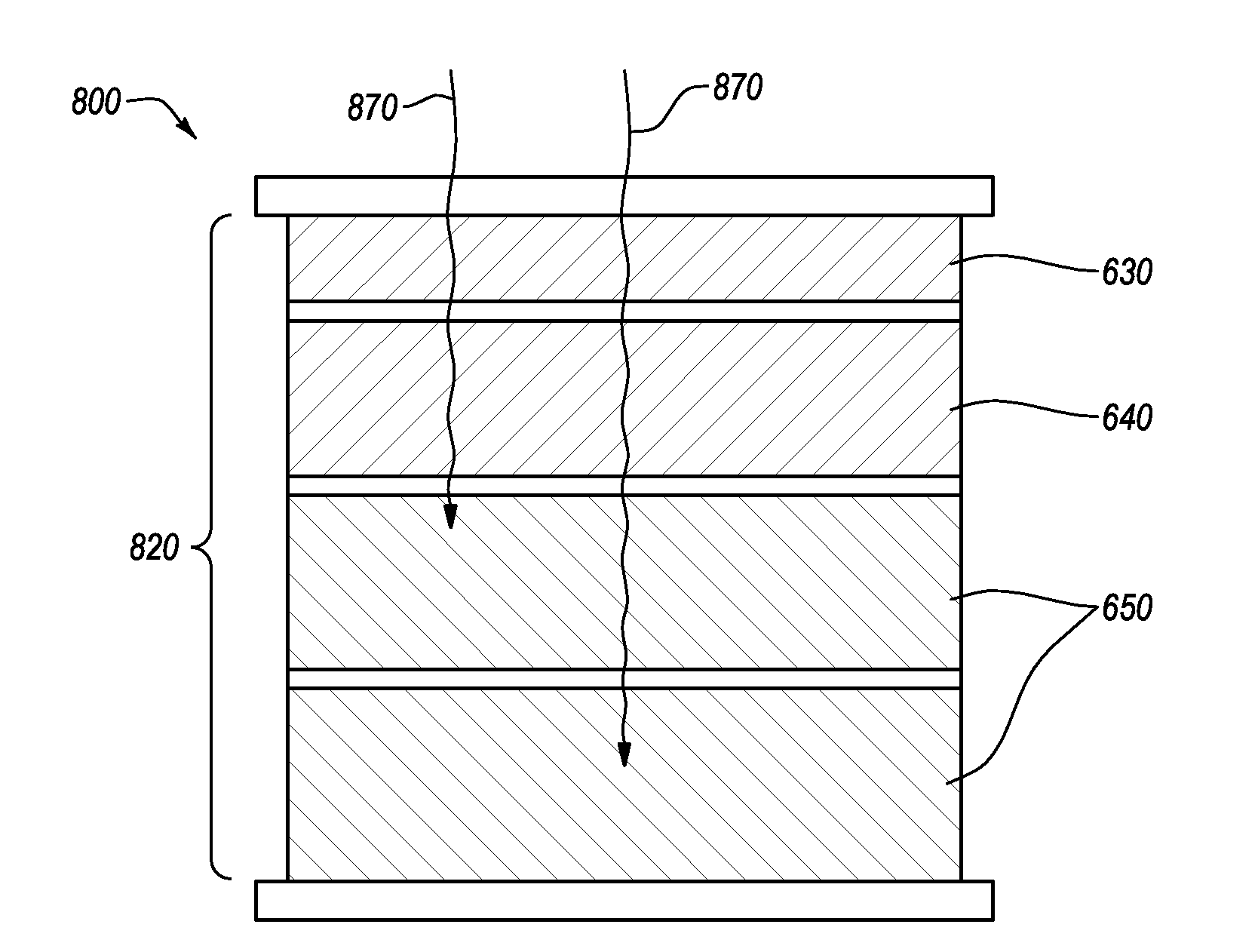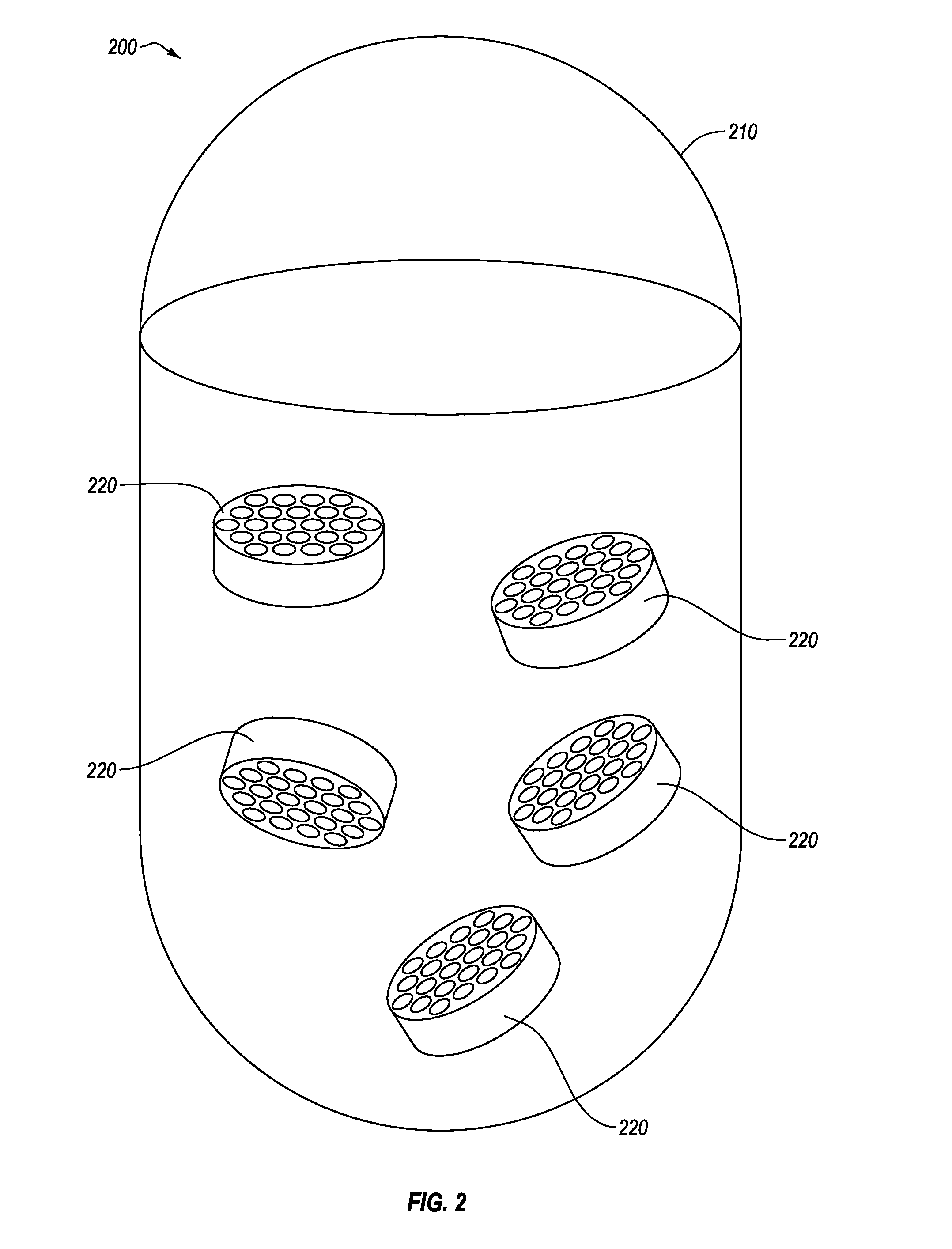Multi-junction artificial photosynthetic cell with enhanced photovoltages
a photovoltaic cell and multi-junction technology, applied in the field of photoelectrocatalytic devices and methods, can solve the problems of limiting the exploitation of a substantial portion of the solar spectrum, high cost and complexity of device fabrication using triple junction a-, and the insufficient stable operation in harsh electrochemical conditions for long hours, etc., to achieve the reduction of co2 to fuels and chemicals, the effect of reducing the amount of free energy for water and reducing the amount of co
- Summary
- Abstract
- Description
- Claims
- Application Information
AI Technical Summary
Benefits of technology
Problems solved by technology
Method used
Image
Examples
Embodiment Construction
I. Artificial Photosynthetic Unit Overview
[0027]An exemplary multi-junction photosynthetic unit 100 is shown in FIG. 1. The illustrated embodiment is a self-contained photocatalytic nanoreactor unit by which solar photons are transformed into electronic excitations which can be separated into electrons and holes which will move to the catalyst / electrolyte interface 110 of the structure and transfer to acceptor / donor surface species 120, 130. To prevent the oxidation from scavenging the electrons (via back reaction), a coating permeable to H+ and H2 (for water splitting) and CO2 (for CO2 reduction) can be applied to the outer surface of the cathodic end 140 of the structure. Effectively, this moves the expensive ion-selective membrane used in most water splitting systems and electrolyzers to the surface of the catalyst.
[0028]FIG. 2 illustrates an embodiment of a photoreactor system 200 formed as a reactor vessel 210 including a plurality of multi-junction photosynthetic units 220 sus...
PUM
| Property | Measurement | Unit |
|---|---|---|
| photovoltage | aaaaa | aaaaa |
| photovoltages | aaaaa | aaaaa |
| photovoltages | aaaaa | aaaaa |
Abstract
Description
Claims
Application Information
 Login to View More
Login to View More - R&D
- Intellectual Property
- Life Sciences
- Materials
- Tech Scout
- Unparalleled Data Quality
- Higher Quality Content
- 60% Fewer Hallucinations
Browse by: Latest US Patents, China's latest patents, Technical Efficacy Thesaurus, Application Domain, Technology Topic, Popular Technical Reports.
© 2025 PatSnap. All rights reserved.Legal|Privacy policy|Modern Slavery Act Transparency Statement|Sitemap|About US| Contact US: help@patsnap.com



